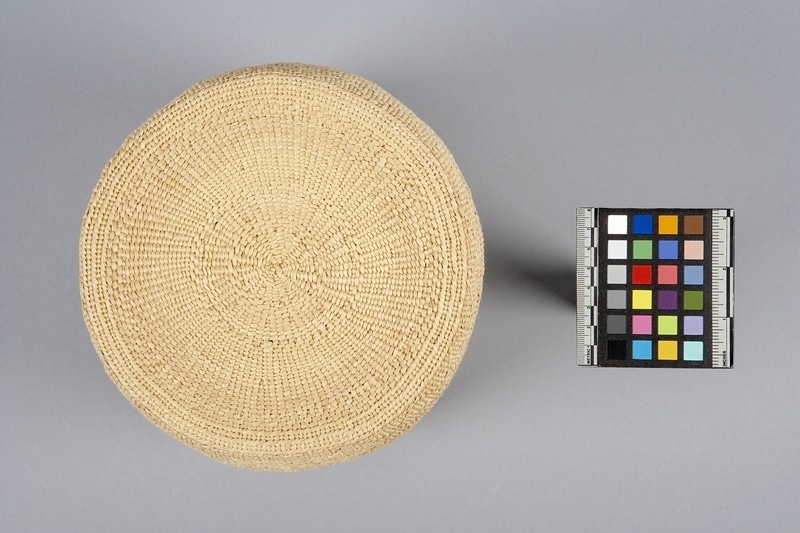Basket Item Number: Nbz904 from the MOA: University of British Columbia



Description
Cylindrical basket woven with double strand twining in spruce root. The walls of the basket are separated into seven horizontal design fields of equal thickness by eight rows of triple strand twining. Diagonal lines and criss-crossing shapes are introduced into some of the design fields by weaving over two warps instead of one at regular intervals around the basket. In each successive row, the stitches are moved over by one warp so that the overall effect created is a diagonal line.
Cultural Context
basketry; contemporary art
Specific Techniques
This basket is entirely woven with spruce root. Double strand and triple strand twining were used. In some places two rather than one warp was twined to create designs in the weave.
Narrative
This basket and another in the collection (Nbz834 a-b) are both made in the Tsimshian style. Rena notes that: "This is the type of weave I learned after I moved north. I did 15 years research work on the Tsimshian weaving. I started in 1970. I worked along with the people in Victoria [the RBCM]; they allowed me to pick some of their old pieces apart so I could see how they were put together, because I hadn't a clue about how the Tsimshian weave was done... At the time when I arrived in the north I was president of Indian Arts and Crafts Society, and I went to the villages and spoke to the elders." She notes that they were afraid to talk about traditional arts since they were associated with the Potlatch and were afraid of being persecuted under the Potlatch law. She adds that: "there was no one left except Mrs. Sutton. She taught me the basics of mat weaving - the diagonal weave of the old cedar bark mats, and she taught me the checker weave. From there I picked up the other."
Item History
- Made by Rena Point Bolton (Maker) in British Columbia, Canada during December 1993
- Collected in Terrace, British Columbia, Canada
- Owned by Rena Point Bolton before August 1994
- Received from Rena Point Bolton (Seller) and Museum of Anthropology Shop Volunteers (Funding source) during August 1994
What
- Name
- Basket
- Identification Number
- Nbz904
- Type of Item
- basket
- Material
- spruce root
- Manufacturing Technique
- twined
- Overall
- height 22.4 cm, diameter 20.8 cm
Who
- Culture
- Coast Salish: Sto:lo
- Creator
- Rena Point Bolton (Maker)
- Previous Owner
- Rena Point Bolton
- Received from
- Rena Point Bolton (Seller) and Museum of Anthropology Shop Volunteers (Funding source)
Where
- Holding Institution
- MOA: University of British Columbia
- Made in
- British Columbia, Canada
- Collected in
- Terrace, British Columbia, Canada
When
- Creation Date
- during December 1993
- Ownership Date
- before August 1994
- Acquisition Date
- during August 1994
Other
- Item Classes
- basketry
- Condition
- good
- Current Location
- Case 6
- Accession Number
- 1678/0001